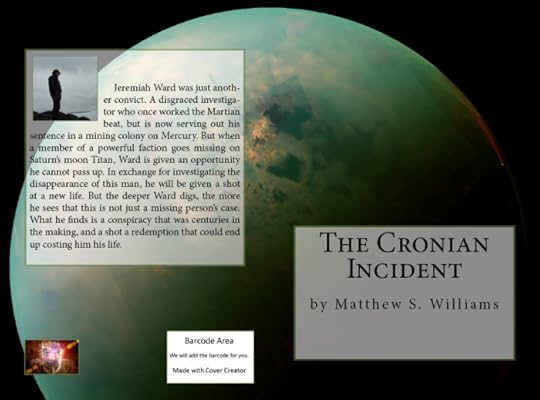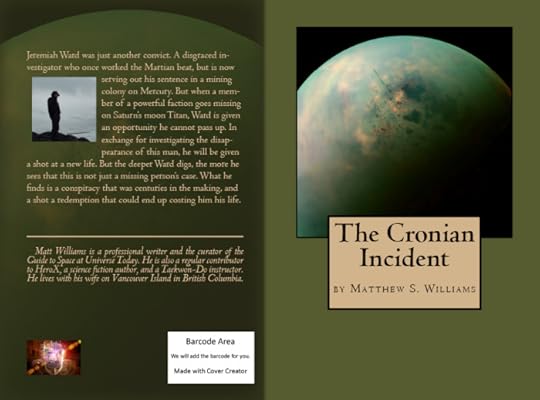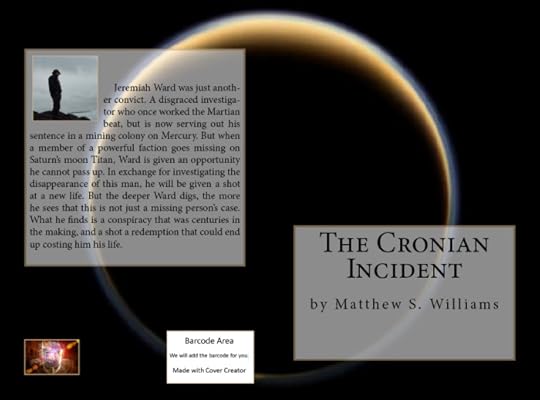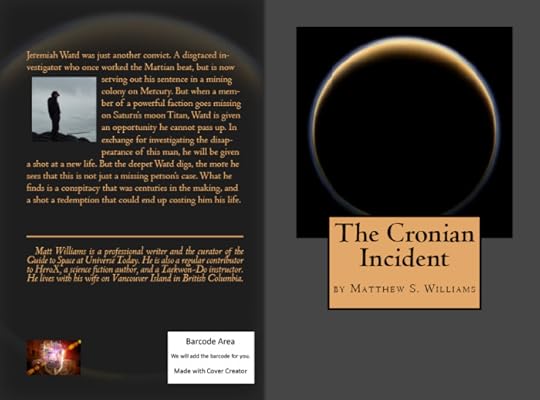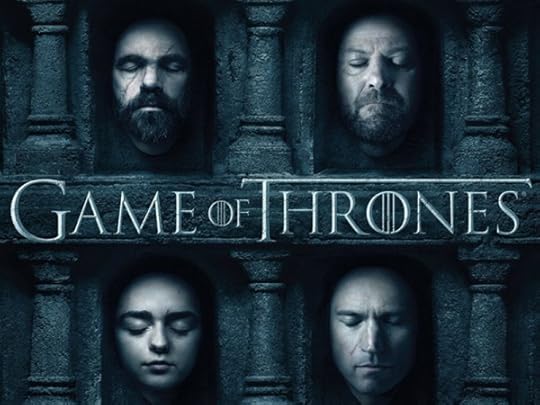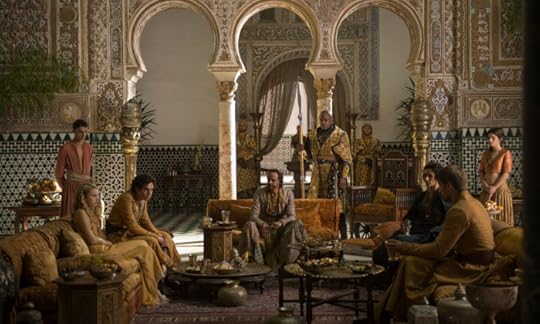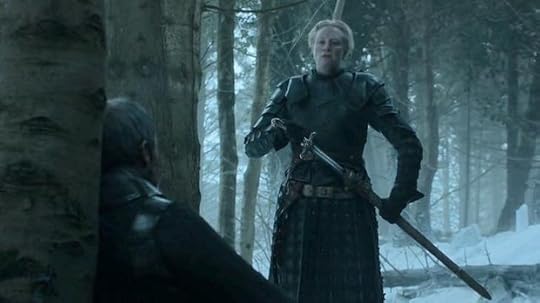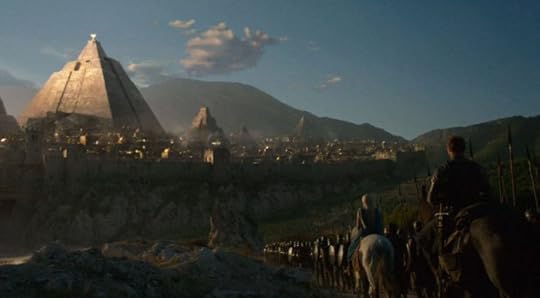Matthew S. Williams's Blog, page 25
August 20, 2016
The Cronian Incident – Trailer!
Hey folks! With every passing week, I am making (meager) progress towards the conclusion of The Cronian Incident. And in addition to designing a cover, formatting the interior, I’ve decided to create a trailer for its upcoming release. Here is the rough-cut, which features images of the planets involved, and a basic description.
I’m thinking of sexing it up with some colored script, some additional images or animations, and any other features I can think of before the book’s release. Let me know what you think in the comments.


August 12, 2016
New Trailer – Star Wars: Rogue One
The latest trailer for the upcoming Star Wars: Rogue One movie was released just yesterday, which fans had to suffer through endless hours of Olympic coverage to see. Okay, maybe suffered is the wrong word, the Olympics are awesome. But so is this trailer. Bask in it. BASK I SAY!


August 1, 2016
Cover Selection for The Cronian Incident!
Okay, so I finally finished work on a few possible covers for The Cronian Incident. I recently got my CreateSpace account reactivated and used the lovely cover creator feature to get some visuals going. The problem is, I’ve been having trouble deciding which one I want t use. On the one hand, I can’t choose to between two themes – one that put text boxes over a full cover image, and another that uses a solid background on the front page, a shadow on the back, and puts the main image and title in boxes.
Then, I found that I couldn’t decide which image I wanted to use after all. Initially, I was all set on the green image of Titan that you can see in the first two options. But there’s also the Cassini image of Titan that shows its hazy atmosphere being illuminated from behind, giving it an eerie, yellow glow. I thought this one worked pretty well too in the mockups. So in the end, I made four covers, using both themes and both images, and figured I’d entertain some outside opinions.
Which one do you think works best? Be sure to vote below…
Green Titan – Whole Cover:
Vote here and thanks for the input:


July 30, 2016
Time to Design The Cronian Incident’s Cover!
Good day, all! I have some more good news on the whole “novel development” front. First, I must acknowledge that I started this book many many moons ago, and it has been of a slow and tedious process lately. In the past few months, I’ve experienced several mental and inspirational log jams and been hounded by the tyranny of the uncompleted manuscript. But I’ve managed to persevere and keep going.
And a few days ago, I decided to tackle a task which I’ve been putting off until now – which is designing the cover. This is unusual for me, since cover-creation is one of my favorite aspects of story-writing. In fact, sometimes I’ve been known to create a cover even before I’ve written any of the story itself! It’s kind of an inspirational tool, being able to see what the book would look like completed. It doesn’t always pan out, but I do enjoy it!
Anyway, here is the image I thought would adorn the cover. This false-color mosaic was created by NASA using images from the Cassini space probe. It’s colorful, relevant to the story, and should fit onto a dust jacket nicely. And best of all, it’s public domain!
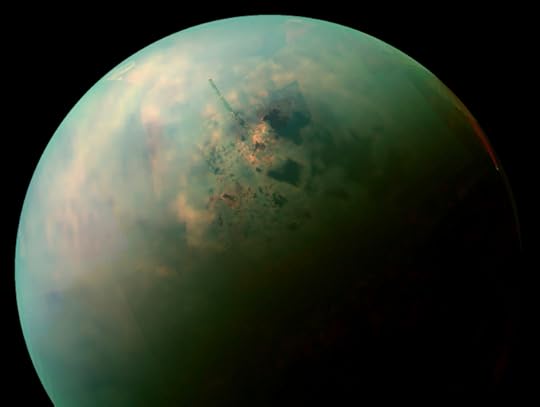 Saturn’s moon Titan, which figures prominently in the story. Credit: NASA/JPL – Caltech/University of Arizona/University of Idaho
Saturn’s moon Titan, which figures prominently in the story. Credit: NASA/JPL – Caltech/University of Arizona/University of IdahoNext, there’s the matter of the blurb for the back of the dust-jacket. These are where I usually have trouble. It is pretty demanding, trying to create a clear, concise and gripping description for your story. Getting just the right combination of words without being too wordy – it’s hard! But I eventually came up with the following description, which I think does a pretty good of painting a picture:
Jeremiah Ward was just another convict. A disgraced investigator who once worked the Martian beat, but is now serving out his sentence in a mining colony on Mercury. But when a member of a powerful faction goes missing on Saturn’s moon Titan, Ward is given an opportunity he cannot pass up. In exchange for investigating the disappearance of this man, he will be given a shot at a new life. But the deeper Ward digs, the more he sees that this is not just a missing person’s case. What he finds is a conspiracy that was centuries in the making, and a shot a redemption that could end up costing him his life.
And of course, there’s the bio information that will need accompany the blurb at the bottom of the rear of the dust jacket. That is something that I’ve had at the ready for awhile now, and this is how it will read:
Matt Williams is a professional writer and the curator of the Guide to Space at Universe Today. He is also a regular contributor to HeroX, a science fiction author, and a Taekwon-Do instructor. He lives with his wife on Vancouver Island in British Columbia.
I’ve only tested it a bit so far, but from what I’ve been told, the description made the book seem interesting. One person told me that he’d buy the book based on the blurb alone. However, he’s a friend so his opinion is a bit suspect[image error]. Any thoughts or criticisms are welcome, since this is going to be the first thing people see once it is available.


Speaking Engagement: Nanaimo Astronomy Society, September 22nd
An interesting development happened once I got back from Europe. Apparently, there are people on the island that are very interested in astronomy, people who were surprised to learn that I also lived here. They are the Nanaimo Astronomy Society, a group of amateur astronomers and stargazers located in the town of Nanaimo – which is in the central Vancouver Island area, about a two hours drive from where I live.
As they explained to me, they have been following my writing at Universe Today for awhile, but didn’t realize I lived locally. Once they realized that, they asked if I would be willing to speak at their upcoming meeting. Needless to say I was flattered, especially when you consider that most of the UT team lives on Vancouver Island. I could only assume they didn’t know about the others. I mean, when you’re a chapter of the Beatles Fan Club, and the band lives in the same region, you don’t exactly invite Ringo to come talk, right?
Anyway, the topic will be “Colonizing Mars”, which will address all the current plans by federal space agencies, private corporations, and crowdfunded organizations to explore, settle and transform the Red Planet. Naturally, I want to throw in a bit about terraforming, since that’s kind of my thing these days!


July 17, 2016
Interview with Voices From L5!
Good news! Not long ago, I took part in a podcast with Liam Ginty – the man who created Voices From L5. This program deals with the subject of space exploration and colonization, and he decided to do a podcast all about terraforming. After coming across my series on the subject over at Universe Today, he contacted me, and we got to talking. By the time we were done, we had created an episode dedicated to the subject.
The episode is about 45 minutes long, and covers such issues as terraforming vs. space habitats, the ethics of terraforming, the challenges and benefits, and whether or not such a thing is likely to happen. If you’ve got some time, and don’t mind hearing my voice (I am still not comfortable hearing it), then check it out.
Voices From L5 – Terraforming Mars
And be sure to check out other podcasts at Voices From L5. Liam covers some pretty interesting topics!


May 15, 2016
Terraforming Series Complete!
I’ve been busy over at Universe Today of late. In fact, as part of a promotional thing for my upcoming book – The Cronian Incident – I’ve been doing a series of articles about terraforming. And it’s actually kind of an interesting story, which I already touched on in a previous post. In any case, the series is now complete, with articles that cover everything from terraforming Mercury to terraforming the moons of the gas giants in the outer Solar System:
The Definitive Guide to Terraforming
How Do We Terraform Mercury?
How Do We Terraform Venus?
How Do We Terraform Mars?
How Do We Terraform the Moon?
How Do We Terraform Jupiter’s Moons?
How Do We Terraform Saturn’s Moons?
To give people the Cliff Notes version of this series, it is clear that at this point, humanity could colonize and terraform certain worlds in our Solar System. The only real questions are where could we? How could we? And why should we? To answer the first two, we could terraform Mars and Venus, since both planets are terrestrial (like Earth), both exist in our Sun’s habitable zone (like Earth), and have either abundant atmospheres or abundant sources of water we can work with. In any other case, the matter becomes impractical, except within certain contained environments (paraterraforming).
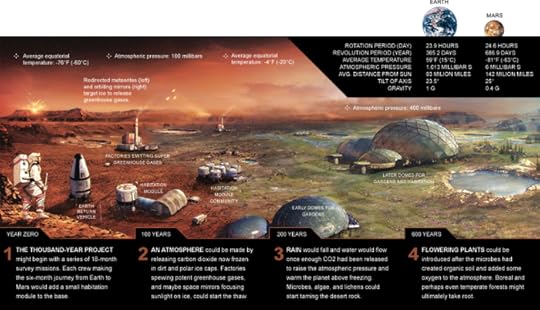 The “greening of Mars”. Credit: nationalgeographic.com
The “greening of Mars”. Credit: nationalgeographic.comAs for the third question – why should we? – that was one of the main reasons I tackled this subject. When it comes to terraforming, the questions concerning ethics and responsibility are unavoidable. And while I did my best to cover this in the course of writing the series, the real debate happened in the comments section. Again and again, people asked the following questions:
How can we live elsewhere when we can’t even take care of Earth?
Shouldn’t we take care of our problems here before we settle other worlds?
Wouldn’t those resources be better spent here?
All good (and predictable) questions. And rather than simply avoiding them or dismissing them as pedestrian, I wanted to seriously have an answer. And so I chose to reply whenever these questions, or some variation, popped up. Here’s the basics of why we should terraform other worlds in this century and the next:
1. Increased Odds of Survival:
As Elon Musk is rather fond of sharing, colonizing Mars was one of the main reasons he started SpaceX (which recently made their second successful landing of the reusable Falcon 9 rocket!) His reason for establishing this colony, he claims, is to create a “backup location” for humanity. And in this, he has the support of many policy analysts and space enthusiasts. Faced with the threat of possible extinction from multiple fronts – an asteroid, ecological collapse, nuclear war, etc. – humanity would have better odds of survival if it were a multi-planet species.
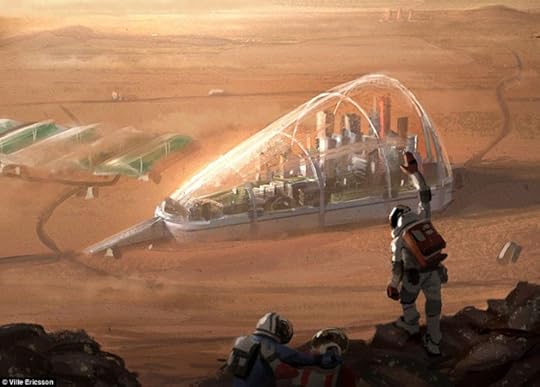 Artist’s concept for a possible colony on Mars. Credit: Ville Ericsson
Artist’s concept for a possible colony on Mars. Credit: Ville EricssonWhat’s more, having other locations around the Solar System decreases the odds of us ruining Earth. So much of why Earth’s environment is threatened has to do with the impact human populations have on it. Currently, there are over 7 billion human beings living on planet Earth, with an additional 2 to 3 billion expected by mid-century, and between 10 and12 by the 2100. But it’s not just the number of people that matters. In addition to every human being constituting a mouth to feed, they are also a pair of hands that need to given something productive to do (lest they turn to something destructive).
Every human also requires an education, a place to live, and basic health and sanitation services to make sure they do not die prematurely. And providing for all of this requires space and a great deal of resources. As it stands, it is becoming more and more difficult to provide for those we have, and our ability to do so is dwindling (i.e. thanks to Climate Change). If we intend to survive as a species, we not only need new venues to expand to, we need other resource bases to ensure that our people can be fed, clothed, housed, and employed.
So simply put, creating permanent settlements on the Moon, Mars, and elsewhere in the Solar System could ensure that humanity survives, especially if (or when) our efforts to save Earth from ourselves fail.
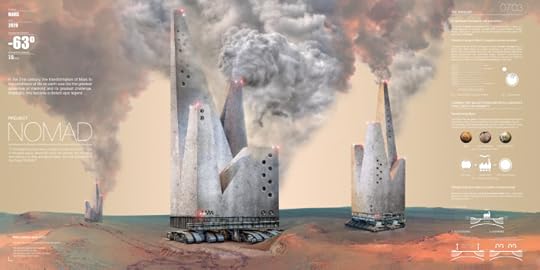 Project Nomad, a concept for the 2013 Skyscraper Competition that involved mobile factory-skyscrapers terraforming Mars. Credit: evolo.com/A.A. Sainz/J.R. Nuñez/K.T. Rial
Project Nomad, a concept for the 2013 Skyscraper Competition that involved mobile factory-skyscrapers terraforming Mars. Credit: evolo.com/A.A. Sainz/J.R. Nuñez/K.T. Rial2. Testing out Ecological and Geological Engineering Techniques:
Basically, there is no way humanity is going to be able to address Climate Change in this century if we do not get creative and start relying on techniques like carbon capture, carbon sequestration, solar shades, and artificially triggered global dimming and fungal blooms. The problem is, any or all of these techniques need to be tested in order to ensure that the results are just right. Altering our environment would not only threaten to disrupt systems human being depend upon for their livelihood, it could also threaten the lives of many people.
Such is the threat Climate Change poses, so we want to make sure the ways in which we address it helps the environment instead of screwing it up further. The best way to do that is to have testing grounds where we can try out these techniques, and where a misstep won’t result in the loss of innocent lives or billions in damages. Ergo, testing our methods on Mars and Venus will give us a chance to measure their effectiveness, while avoiding any of the political barriers and potential hazards using them on Earth would present.
3. Mars and Venus are Perfect Testing Grounds:
Astronomers have been aware for some time that Mars and Venus are similar to Earth in many ways. As previously mentioned, they are both terrestrial planets that are located in our Sun’s habitable zone. But of course, they are also different in several key respects. Whereas Mars’ atmosphere is very thin, it has no magnetosphere, and its surface is extremely cold and dry, Venus has an atmosphere that it extremely dense, hot enough to melt lead, and where sulfuric acid rains are common.
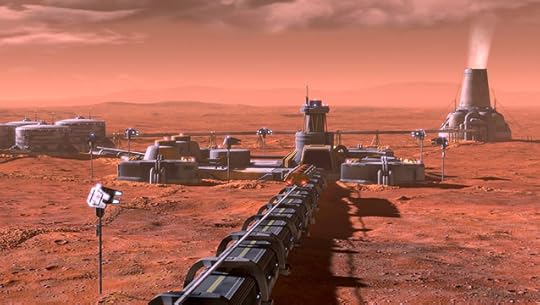 Artist’s impression of a atmospheric generator on Mars. Credit: futurism.com
Artist’s impression of a atmospheric generator on Mars. Credit: futurism.comThe reasons for this? Mars sits at the outer edge of the Sun’s habitable zone and receives less warmth. Combined with its eccentric orbit – and a lack of a protective magnetosphere that caused it to lose its atmosphere billions of years ago – this is what has led to it becoming the very cold and dry planet we are familiar with. Venus, sitting on the inner edge of the Sun’s habitable zone, suffered a runaway Greenhouse Effect early in its history, which caused it to become the extremely hot and hellish world it is today.
Terraforming Mars would therefore require that we thicken the atmosphere and warm it up. This means triggering a Greenhouse Effect by pumping lots of CO2 and nitrogen (probably in the form of ammonia) into its atmosphere and then converting them using cyanobacteria and other species of bacteria. So basically, to make Mars more Earth-like, we could build heavy industry there to pollute the hell out of the place – something we’ve been doing here on Earth for hundreds of years! – and then test out techniques designed to convert the atmosphere into something breathable. What we learn could then be applied here at home.
The same holds true for Venus. In order to terraform that world into something livable for humanity, the first challenge will be to arrest the runaway Greenhouse Effect there and convert the carbon dioxide/sulfur dioxide-rich atmosphere into one composed of nitrogen and oxygen gas. There are many ways to do this, and testing one or more of them out will yield crucial data for using similar techniques on Earth. In a nutshell, transforming Mars and Venus will help us save Earth.
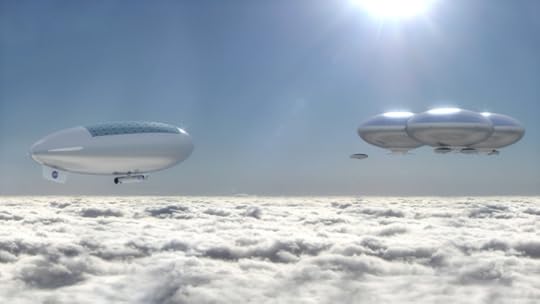 Artist’s concept of a Venus cloud city – part of NASA’s High Altitude Venus Operational Concept (HAVOC) plan. Credit: Advanced Concepts Lab/NASA Langley Research Center
Artist’s concept of a Venus cloud city – part of NASA’s High Altitude Venus Operational Concept (HAVOC) plan. Credit: Advanced Concepts Lab/NASA Langley Research Center4. Our Solar System has Abundant Resources:
Between the Moon, Mars, Venus, Mercury, the Asteroid Belt, and the systems of Jupiter, Saturn and beyond, there are literally enough resources to last humanity indefinitely. And while we can’t hope to possess them all at once, every step in colonizing the Solar System offers us the chance to expand our resource base, conduct scientific research and exploration, add more land which we can develop and use for human settlement, and ultimately grow as a species.
To break this process down piecemeal, we must start with the Moon. By establishing a colony in its southern polar region, we could leverage the local resources to create a permanent settlement and use it as a refueling base for mission deeper into the Solar System (a move which would save billions on all future missions). Solar operations could also be built on the surface to beam energy to Earth, the Moon’s rich minerals could be mined for Earth industries, and the mining of Helium-3 could power fusion reactors all over the world.
Already, NASA is eying the Shakelton Crater as a possible location, where there is an abundance of water ice and a dome could be built over it to create a contained atmosphere. The moon’s stable lava tunnels also present a good site, since they are large enough to fit entire cities within them and would hold an atmosphere nicely. And from there, humanity could mount missions to Venus and Mars, which would in turn add their abundant supplies of minerals to our economy.
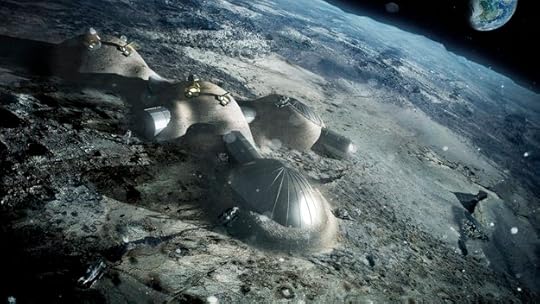 The European Space Agency’s concept for a Moon base. Credit: ESA
The European Space Agency’s concept for a Moon base. Credit: ESAMercury would also present a major opportunity for mining and solar operations. And like the Moon, colonies could be built in the permanently shaded regions around the northern and southern polar regions (where there are abundant supplies of water ice) and in underground stable lava tubes. The Asteroid Belt literally has enough minerals and ices to keep humanity supplied indefinitely (hence the interest in asteroid prospecting of late), and the outer Solar System has enough ice, volatiles, and organic compounds to do the same.
In short, step by step, the colonization and/or terraforming of our Solar System offers humanity the opportunity to become a post-scarcity race. While many decry the idea of our species expanding because of the greed and abuse we have demonstrated in the past (and continue to demonstrate today), much of this greed and abuse comes from the fact that our current economic models are based on scarcity. By removing that from the equation, it would be that much more difficult for human beings to hoard resources for themselves while denying their neighbor.
Faced with all of this, the question no is longer one of “why should we”, but rather “why shouldn’t we?” Why shouldn’t we establish a human presence elsewhere in the Solar System, knowing that it could not only help us to save Earth, but ensure our survival as a species for the indefinite future? This of course does not address all the challenges that remain in doing so, but it does tackle one of the biggest arguments there is against space exploration and colonization.
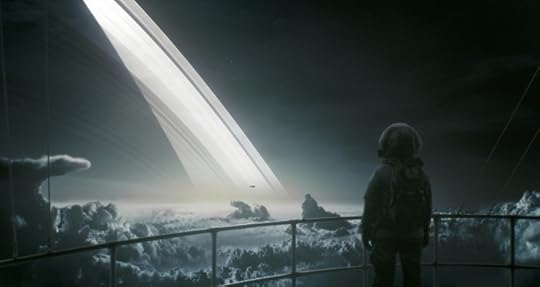 Still pic from Wanderers, by Erik Wernquist
Still pic from Wanderers, by Erik WernquistAs for the rest? Well, I’m sure we’ll tackle those questions, and then some, when the time comes. In the meantime, I encourage everyone to keep looking up at the stars and saying the question, “why not?”


May 14, 2016
Cronian Incident – Part III Complete!
Hello, everyone. As usual, I feel obliged to share some good news of the milestone-hitting variety. As the title makes abundantly clear, I’ve completed the third part in my upcoming novel, The Cronian Incident. Yes, thanks to my somewhat less than tireless efforts over the course of the past few months, this story is now three-fourths complete, and officially stands at thirty chapters and 60,000 words in length. And it’s been quite the ride so far.
Since I stopped daydreaming about (and bothering people with) this idea and began putting words to paper, I have managed to bang out the better part of a story that involves our Solar System in the late 23rd century, colonization, terraforming, and the future of humanity. And in the course of this, I’ve had to create and detail settings for Mercury, Mars, and the Jovian moon Callisto, and fill in bits of pieces on culture, history and other assorted aspects of background to boot.
Much of this has to do with setting the tone of the late 23rd century. The way I see it, humanity has passed through two major cataclysms at this point, both of which took place in the 21st century. The first was the Climate Crisis, where all over the world, economies began to collapse as drought, crop failure, and warfare led to the displacement of millions of people.
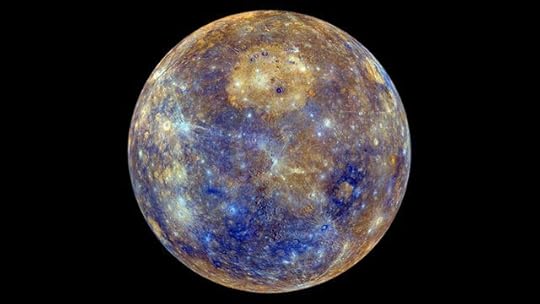 Color-enhanced map of Mercury. Credit: NASA/JPL
Color-enhanced map of Mercury. Credit: NASA/JPLThe second occurred shortly thereafter, when all around the world, the technological progress that has been building up since the Paleolithic exploded in a quantum leap of learning and accelerated change. Within decades, the Climate Crises began to abate, and a new world characterized by runaway change began to take over. And at about the same time, a renewed Space Age set in as humans began to migrate to the Moon, to Mars, and beyond.
And after about a century and a half of all that, the human race has now colonized the majority of the Solar System. Between Mercury, Venus, the Moon, Mars, the Asteroid Belt, Jupiter’s moons, Saturn’s moons, and of course, Earth and its millions of orbital habitats, the human race now stands at a hefty 15 billion. And across this vast interplanetary dominion, a massive economy has taken root that is beyond scarcity and want.
But there are no shortages of intrigue thanks to the forces that have shaped this new age. While the inner Solar System is populated by people who have embraced the Singularity, transhumanism, posthumanism, and runaway progress, the outer Solar System has become a new home for people looking to escape this pace of life and maintain a simpler existence. And in time, the disappearance of one person will force everyone – be they in the inner or outer worlds – to sit up and take notice.
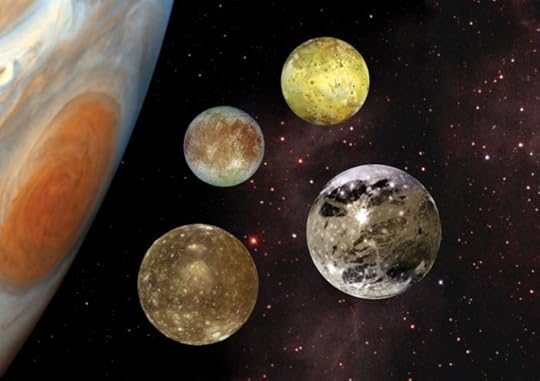 Jupiter’s larger (Galilean) moons, Callisot, Europa, Io and Ganymede. Credit: NASA
Jupiter’s larger (Galilean) moons, Callisot, Europa, Io and Ganymede. Credit: NASAI tell you, it’s been tiring process, getting this far. And at one point, I did declare that I had OD’d on writing about setting and world building. I mean, how can you dedicate 20,000 words to detailing a place, making it as vivid as possible for the reader, and then just switch to another? Screw plot necessity, it’s like abandoning an idea half-way! And I still have the all important one – the Cronian moon Titan – to cover.
But I’d be lying if I said that it hasn’t also been fun and that it wouldn’t be so tiring if I weren’t’ completely emotionally invested in it. And (spoiler alert!) that is where things should be the most interesting. As is usually the case, Part I through III of this four-part story have been all about establishing character, background, a sense of space and place, and introducing the various elements that drive the plot.
But in Part IV, I will not only get to write about a particularly intriguing place – Titan; capital city Huygens; dense nitrogen-methane atmosphere; principle industries, methane and ammonia harvesting; principle activities, sailing on methane lakes and gliding in low-g, cruising for action in its Yellow Light District and political dissent – but I’ll also be getting into the real heart of the plot, the mystery of the disappearing Dr. Lee!
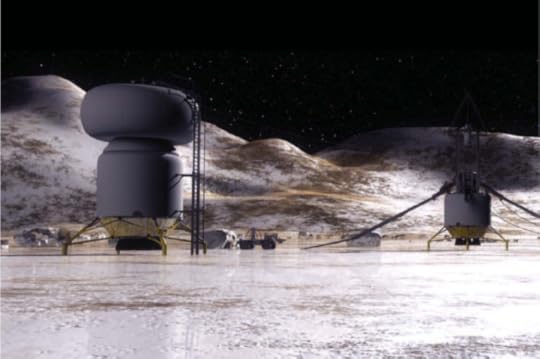 A possible base on the surface of Callisto. Credit: NASA
A possible base on the surface of Callisto. Credit: NASAIn the coming months, I hope to have part IV, fully edited, and in a position to be published. While it remains unclear just what form that will take – the old submission to a publishing house route, or via an independent publisher – I know that some really amazing friends and colleagues will be there to cheer it on. Hell, some of them actually read this blog, for some reason. So if you’re reading this now, then I thank you for sticking with me thus far![image error]


May 12, 2016
Thanks to Kepler, We Just Doubled our Chances of Finding Aliens
You know how this is going to start, don’t you? Yes, with one of these:
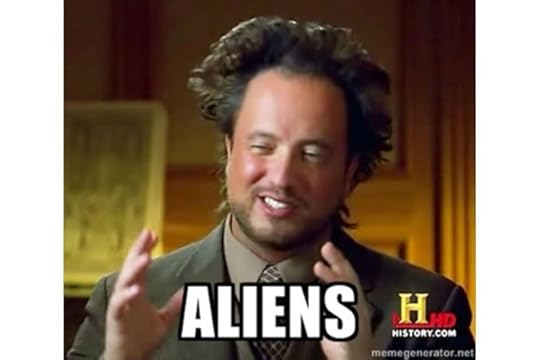
In any case, here is an article that I wrote for UT recently. However, due to a surprising lack of response to the subject on social media, it never got published. So I have decided to publish it in full here. Enjoy!
Since it was deployed in March of 2009, the Kepler space telescope has been responsible for the discovery of thousands of potential extrasolar planets (aka. exoplanets). In fact, as of January 2015, Kepler confirmed the existence of 1,013 exoplanets in about 440 stellar systems, along with a further 3,199 unconfirmed planet candidates. This is certainly an impressive feat, especially when you consider the fact that it accounts for almost half of all the exoplanets discovered so far.
But earlier today, NASA hosted a news conference in which they declared that Kepler has effectively doubled the number of exoplanets it has discovered. In what is the largest single batch of discoveries to be announced at one time, NASA claimed that the Kepler mission has validated the existence of 1284 new planets with 99% percent certainty (along with 428 likely false positives).
Not only is this the largest group of discoveries made by NASA (or any space agency) to date, it doubles the number of planets in the Kepler catalog. As of May 9th, 2016, some 1,041 confirmations had been made. But with this latest addition, that number now stands at a robust 2,325. Quite the accomplishment for a mission that was nearly abandoned due to mechanical failure.
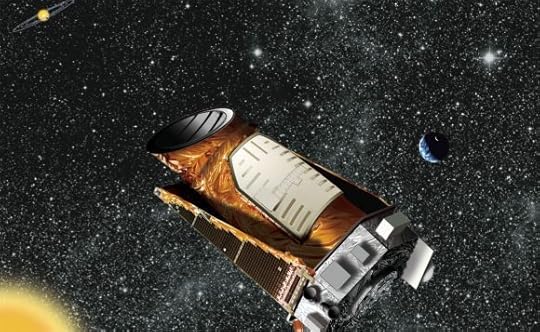 Since its deployment in 2009, Kepler has confirmed the existence of over 2000 extra-solar planets. Credit: NASA
Since its deployment in 2009, Kepler has confirmed the existence of over 2000 extra-solar planets. Credit: NASABack in 2012, the Kepler mission suffered a setback when one of the spacecraft four reaction wheels – which are used to point the spacecraft – stopped working. This was followed by a second failure in May of 2013, which disabled the collection of science data and threatened to end the mission three years ahead of schedule.
After much consideration, NASA declared on August 15th, 2013 that they had given up on attempting to repair the reaction wheels and had instead chosen to modify the mission. By November, NASA reported that Kepler would henceforth be dedicated to searching for habitable planets around smaller red dwarf stars – a mission which they named K2 “Second Light”. This mission extension was approved shortly thereafter, and Kepler has been carrying on with this mission ever since.
And with this latest batch of discoveries, Kepler is showing that it is still pulling its weight, and then some! Of those planets confirmed in this latest batch, most fell into the class of “mini-Neptunes” – planets that are the lower limits of a gas giant’s size. The next greatest sample consisted of “super-Earths” – terrestrial planets that are larger than Earth, but significantly less than that of a gas giant.
The remainder of those discovered fell between those that were Earth-sized or Neptune-sized gas giants. And as was made clear at the NASA-hosted conference, the discovery of over 2000 more confirmed exoplanets will also be of major importance for the next-generation of space telescopes, all of which will picking up where Kepler leaves off.
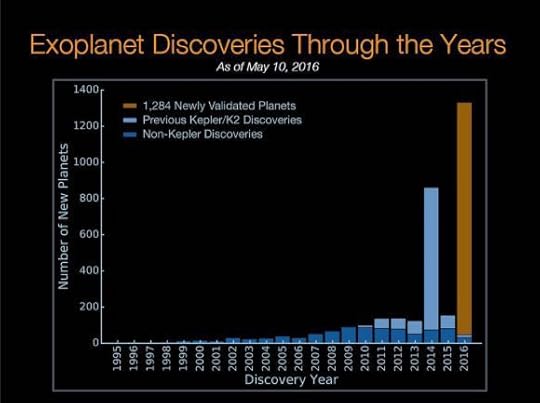 The number of newly discovered exoplanets, by year. Credit: NASA
The number of newly discovered exoplanets, by year. Credit: NASAThese include missions like the James Webb Telescope, the Transiting Exoplanet Space Survey (TESS), the Wide Field Infrared Survey Telescope (WFIRST), and the ESA’s Plato mission. Much like Kepler, they will be searching for more than just extra-solar planets. Using similar detection methods as Kepler, as well as coronagraphic measurements, these missions will be hunting for more worlds, and assessing their properties to see if they are capable of supporting life.
And in the meantime, there is still plenty for Kepler to do before its mission is set to expire (in October of 2016). For example, there are more than 3,000 candidate planets in the Kepler database that need to be confirmed or ruled out. And then there are the “Kepler Objects of Interest”, a list of detections that need to assessed to see if they can even be considered as true candidates.
It certainly goes without saying that this latest announcement is also a major step along the road to finding extra-terrestrial life in the Universe. The more planets we find, the greater the odds of finding ET! While it may be naive to assume that they would live under conditions similar to our own, we are looking for the low-hanging fruit first. And finding and studying more exoplanets could also help us to understand what other conditions life might flourish under.
The research that led to this announcement was also published today in The Astrophysical Journal under the title “False Positive Probabilities For All Kepler Objects Of Interest: 1284 Newly Validated Planets And 428 Likely False Positives” by Timothy D. Morton (et al.).


May 2, 2016
Some Thoughts On Game of Thrones Season SIx
Hello folks! As you may know, I don’t get around to posting much in the way on this blog lately. These days, my time has been pretty much stretched thin with writing for Universe Today and HeroX, and what time I have left over I generally dedicate towards my personal writing. But I felt the need to hop on here today and share something which it pains me to admit.
I do not care for Game of Thrones anymore! And since I have friends who were so excited about Season 6 and raved about how Season 5 ended, I know this will lead to some arguments down the road. But I must be honest here…
When the show began, I was a non-initiate, someone who had never read the books or ever heard of George R.R. Martin. Once the first season was complete, I took it upon myself to read all five books and found myself quickly turned into a ASOIAF geek. Naturally, this lessened the experience of the show as for Season 2, 3, 4, and 5, I knew how the story would go and reacted predictably whenever they changed any details. But that was only because I liked the story so much.
But last season, the writers of GOT went so far off book and left so much stuff out that I became genuinely disinterested with the show. Still, I felt I had to see what they were going to do with Season 6, so when “The Red Woman” premiered, I was sure to tune in. And then I watched the follow-up in “Home” to see where things went from there. Needless to say, the way they handled things reminded me of why I lost interest.
Let me explain why…
When the show writer’s tackled season 5, they had material from two books to work with – A Feast for Crows and A Dance with Dragons. And whereas they divided the third book (A Storm of Swords) into two seasons and ended up padding the second half with lots of things they made up, for Season 5 they skimmed over much of it, left a whole bunch of things out, and then reached the point where they had nothing more of Martin’s material to work with.
And it seems obvious to me why they did that now. In the course of making Season 5, they knew they would be flying without Martin’s net by Season 6. And so they began moving to eliminate all the material they didn’t want to work with and began simplifying the plot. Too bad, because so much of what they eliminated was intriguing and made the story interesting.
Also, it seems obvious that the promos they made for Season 6 – “Anybody can be killed” – have been less than honest. In reality, they’ve been killing off only certain kinds of characters, and it seems clear why. Now covering all of what they changed would take some time, so here’s the Cole Notes version of it. This is where the story left off in the books, and where they diverged from it…
Tyrion In Essos: Having killed his father, Tyrion fled King’s Landing with Jaime and Varys help, and travels to the free city of Pentos, where he is in the care of lllyrio Mopatis (the same man who had played host to Daenerys and her brother Varys for years). Tyrion is then sent to Volantis in order to meet with a party led by a man named Griff and his son, young Griff, which will be traveling east to find Daenerys. After spending time with them, Tyrion learns the startling truth.
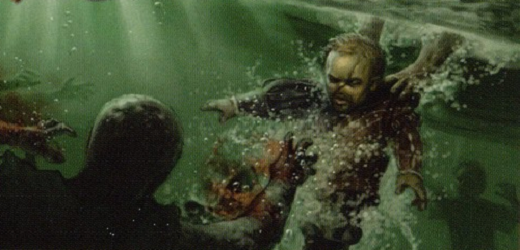 Tyrion pulled from the river, by Dimitri Bielak
Tyrion pulled from the river, by Dimitri BielakYoung Griff is in fact Aegon Targaryen, the son of Rhaegar Targaryen (and cousin to Daenerys) who was thought to have died in Robert’ Rebellion. Griff, meanwhile, is Jon Connington, the Hand of “The Mad King” Aerys II. For years, Aegon has been raised in secret, for the day that he could return to Westeros and reclaim the throne. With Daenerys having risen to become queen of Mereen and the “Mother of Dragons”, they now intend to find Daenerys’ and convince her to marry Aegon, at which time they will return to Westeros in force and claim the thrones.
Unfortunately, Tyrion is kidnapped by Ser Jorah Mormont, who intends to take him to Daenerys as a gift. But they are taken by slavers who intend to force them to fight in Mereen’s recently reopened fighting pits. During the opening fight, when Daenerys is attacked and flees on the back of Drogon, Tyrion, Mormont, and Penny (another dwarf taken as a slave) flee outside the city.
Beyond the walls of Mereen, the armies of Slaver’s Bay are gathered.Having retaken Yunkai and Astapor from the freed slavers, they are now gathered to lay siege to Mereen. Daenerys managed to broker a truce by reopening the fighting pits and marrying Hizdahr zo Loraq. However, with her gone from the city, the truce is broken. Tyrion and the others manage to join with a sellsword company Second Sons, and hope to switch sides while the camp suffers from a plague that has broken out (the Bloody Flux).
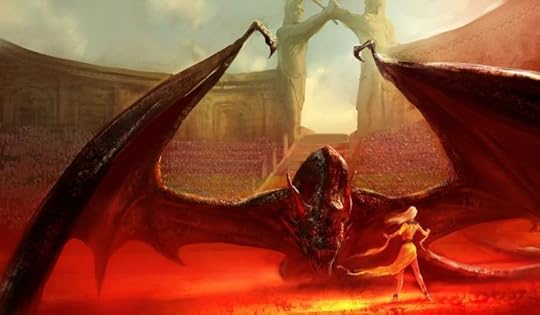 Daenerys and Drogon in Daznak’s Pit, by Marc Simonetti
Daenerys and Drogon in Daznak’s Pit, by Marc SimonettiWhile in the wilderness, Daenerys is found by an old foe – Khal Jhaqo, the man who took command of the khalasar after Khal Drogo died.
Iron Islands: The Ironborne choose a new king after Balon Greyjoy dies in a fatal fall at Pyke. Euron, Balon’s brother, becomes the new king by promising his people victory thanks to a “dragonhorn”, an instrument which can control dragons that he managed to procure. He orders his younger brother Victarion to sail to Essos to bring Daenerys and her dragons back.
Dorne: The Sand Snakes plot to kidnap Princess Myrcella has failed thanks to the intervention of Prince Doran Martell. After freeing the ringleader – his daughter, Arianna Martell – he explains to her that he has a plot to get revenge on the Lannisters, Baratheons and Tyrells and is not the weak man they think he is. This plan involves sending his son Quentyn Martell to Mereen to marry Daenerys and bring her home to Dorne, where their kingdom will pledge support for her and take the Iron Throne for House Martell.
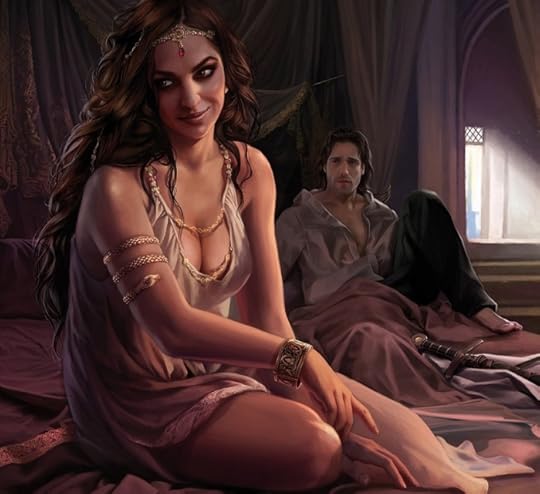 Arianna Martell and Ser Arys Oakheart, by Magali Villeneuve
Arianna Martell and Ser Arys Oakheart, by Magali VilleneuveHowever, this plan went a bit awry when Daenerys fled Mereen, and Quentyn is burned alive when he and his men try to take matters into their own hands and free her dragons. At the same time, the Ironborn are traveling to Mereen in the hopes of striking an alliance with Daenerys and bringing her and her dragons back to Westeros, also with the hope of conquering the Iron Throne for themselves.
In the Riverlands: Brienne of Tarth still searches for Sansa and Arya with the help of Podrick Payne. Along the way, she runs into the Brothers Without Banners, who arrest her and take her before their master – Lady Stoneheart. Brienne learns, to her surprise and horror, that Stoneheart is actually Lady Caitelyn Stark.
After being murdered at the Red Wedding, her body was thrown into the river and washed up on shore. The Brothers found her, and Lord Berric Dondarion (having been resurrected many times by Thoros of Myr) breathes his last life to her. A cold, viscous shadow of her former self, she orders Brienne killed on suspicion that is she working for the Lannisters, but Brienne is released after agreeing to kill Ser Jaime.
 Lady Stoneheart, by Azad Injejikian
Lady Stoneheart, by Azad InjejikianShe finds Ser Jaime in the Riverlands, where is he busy negotiating an end to the sieges that are still taking place there. When they meet, she tells him that she has found Sansa Stark, but only Jaime can accompany her. The reason, she claims, is that Sandor Clegane (The Hound) is alive and with her, and that he will attack if he Brienne comes alone. In short, we are led to believe she is leading him into a trap.
In The North: Jon Snow allows the Wildlings to pass through the Wall after their defeat at the hands of Stannis. While it is believed that Mance Rayder was burned alive, along with the other Wildlings that would not bend the knee to Stannis’, Jon learns that he’s actually alive. With Melisandre’s help, who cast a spell of illusion on him, he switched places with Rattleshirt and has been carrying on in disguise. Jon asks him to travel south and rescue his sister Arya, who he was told was married to Ramsay Bolton (not knowing that he married Jeyne Poole, who is being forced to impersonate Arya).
Melisandre also warns Jon that she has seen him in her visions, where he is surrounded by daggers in the dark. As he prepares to ride south to fight the Boltons, the vision comes true when Jon is attacked and stabbed severely by Bowen Marsh and other members of the Night’s Watch. The book ends with us not knowing if he survives or not.
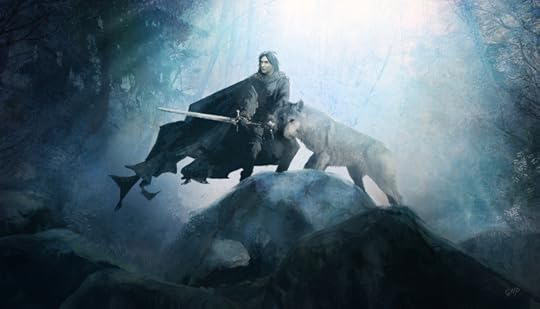 Jon Snow and Ghost, by guillemhp
Jon Snow and Ghost, by guillemhpJust south of them, Stannis has taken Deepwood Motte and captured Asha Greyjoy (Theon’s sister). However, he is unable to march on Winterfell since the winter snows have made movement impossible and hunger begins to set in. However, the Boltons are doing just as bad at Winterfell, where the Boltons and their allies begin turning on each other. In the confusion, Theon rescues Jeyne Pool (who was posing as Arya) and they escape the castle together. They flee into the wilderness, eventually being picked up by Stannis men and brought back to camp. Theon reunites with his sister for the first time since his capture.
Oldtown: Samwell Tarley, Gilly, and Maester Aemon travel from Castle Black to Oldtown via Bravos. It is there that Sam is to become a Maester, seek out the old prophecies, and learn all he can about the coming of the White Walkers and the prophecy of Azor Ahai reborn. Aemon reveals to him that he once thought that this might be Varys, but now believes it to be Daenerys. Aemon dies before they can reach Oldtown, but when Samwell arrives, he speaks to the masters at the Citadel of what Aemon told him. When they hear this, Archmaester Marwyn leaves to go to Mereen with the intention of becoming Daenerys’ maester.
At King’s Landing: Cersei confesses to having sex with her cousin, Lancel Lannister, and performs the penace walk back to the Red Keep. There, she meets Ser Robert Strong (a resurrected Gregor Clegane) who will she is relieved to know will be fighting for her if she asks for a trial by combat. With Ser Jaime out of the city and her father dead, the task of running things has fallen to her uncle, Kevan Lannister.In addition to trying to clean up the messes Cersei and Joffrey has made, he must also deal with the fact that Aegon Targaryen’s forces appear to be landing in the east and raising a banner of war.
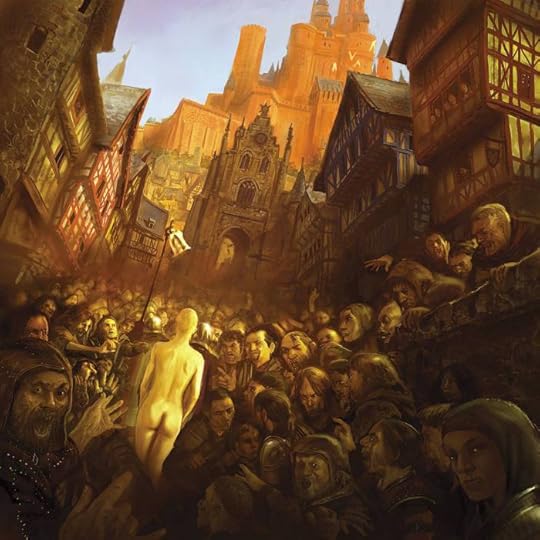 Walk of shame, by Marc Simonetti
Walk of shame, by Marc Simonetti
Shortly after Cersei arrives home and they dine together, Ser Kevan is murdered in his quarters by Varys (who has also killed Grand Maester Pycelle). Varys explains to Kevan before he dies that he is part of the conspiracy to bring Aegon Targaryen home and to see him made king.
So that’s the story up until Season 6 (or the end of A Dance of Dragons) in a nutshell. As you can plainly see, so much of the plot had to do with Daenerys at this point, who has been revealed to be intrinsic to the whole prophecy of the coming of winter, the coming of the Others, and the war that will decide the fate of Westeros and the world. Basically, the War of Five Kings is over, and all roads lead back to Westeros by way of Mereen.
Where They’ve Change Things:
In the series, things changed drastically by Season 5. Basically, they were using material at that point from both A Feast for Crows and A Dance with Dragons, but seemed to be skimming through much of it, leaving a lot of other stuff out, and taking various story threads and tying them together.
For example, rather than showing the full intrigue that was happening in Dorne – which included Arianna Martell’s daughter and the Sand Snakes kidnapping Myrcella and positioning her to become Queen on the Iron Throne, thus making her betrothed (Trystane Martell) king – they instead made a story about Oberyn’s paramour (Ellaria Sand) and the Sand Snakes trying to kill her. Instead of Prince Doran thwarting this and telling Arianna of his plans, we get a big mash-up with Jaime and Bronn trying to save her and the whole thing ending in failure.
Ellaria and the Sand Snakes respond by killing Doran, Myrcella and Trystane all in one shot. Not only did none of this happened in the story, but killing off ALL these people means that their attempts to get Daenerys on their side and come back to Westeros are not going to happen. It eliminates the Dorne thread from the story altogether, and also means Cersei is mourning two dead kids instead of one as she prepares for her trial.
Speaking of murdering people off, they also killed off Stannis in a way that was very sudden. Not only did he not burn his daughter at the stake in the story, his daughter and his wife weren’t even with him as he marched to lay siege to Winterfell, which only made sense. You don’t bring family with you on a war march! Another person he left behind was Melisandre, so none of these people abandoned him or committed suicide on him. He also didn’t then march on Winterfell only to get his butt handed to him by Ramsay and then killed by Brienne. The way this all happened in one episode showed that they were eager to kill off his thread.
Speaking of Brienne, she was supposed to be in the Riverlands. But since they decided, for whatever reason, not to touch the Lady Stoneheart part of the story, this meant the writers had to give her something to do. In the same vein, Sansa had little to do, so they changed it up and made it her who was married to Ramsay Bolton and who got rescued by Theon.
At the same time, Ramsay Bolton spent the second episode of this season hatching a plot to kill his father, his stepmother, and his new brother is some big power play. With Roose gone, this means that Ramsay will now likely try to kill Jon Snow again (something they never bothered with in the books). With no epic battle looming between Stannis and he, there’s not much left for him to except get killed off himself, thus eliminating that thread as well.
Meanwhile, Theon’s father has been killed off and the island has fallen into political divide. Sure, this is close to what happened in Crows, but they’ve done it here makes it seem like this is just another minor thread they intend to tie off.
Getting to Mereen, the show skipped over the siege on the city. While just about everything else has happened according to the books (except that Tyrion and Mormont have not found their way into her court yet), this removes a major aspect of the story which was Martin was gearing up for book 6 – The Winds of Winter. So now, all Daenerys can do now is escape the Khal, return to Mereen and resume being queen(unless they choose to throw the sage in later).
But worst of all was the way they handled Jon Snow’s death/resurrection. After showing him to be dead in “The Red Woman”, it was quite obvious what was going to happen. A disheveled and broken Melisandre would be called upon to resurrect him, she would, and he would resume command of the Night’s Watch. It just felt so… predictable!
Ah, and of course, the entire thread involving Aegon Targaryen was completely left out. That means that in Westeros, there isn’t currently a war looming as Jon Connington lands forces loyal to Aegon, Kevan Lannister isn’t murdered, and we are not treated to the knowledge that Varys was conspiring with them all along. Instead, Varys is in Mereen conspiring to bring Daenerys home, but can’t do that until she comes back.
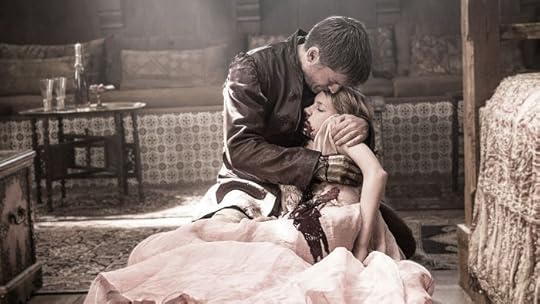
Why This Is Wrong (IMHO):
Basically, I didn’t like any of this because it eliminated so much of the plot. Sure, Martin can be (and is) criticized for writing stories that are too convoluted and too detailed. And in all fairness, I really began to feel by book four that things were going nowhere and I was determined to quit. But then, the ending of A Feast for Crows brought everything together quite succinctly and let us know exactly why what seemed like diversions and a drawn out tale was important.
And after the fifth book, A Dance of Dragons, things were really coming together and there was a sense of synthesis to the long tale that had been delivered thus far. By eliminating four separate threads from the story, the series writers are depriving the universe of a lot of its best material and altering the story inexorably.
For instance, the Iron Islanders are all but gone from the plot. The Dornish plans for revenge are all but gone too. Stannis’ plot to secure the crown for himself is gone, and in all likelihood, so will the war to secure the North. Aegon Targaryen and his hopes to secure the throne were never included. And Lady Stoneheart and House Stark’s hopes for revenge have also been excluded.
And in this, it seems pretty clear what the writers are doing. By closing down these other threads, they are now left with the Big Three – King’s Landing, The North, and the East. In all fairness, this was how the show started and it seemed like a classic narrative structure. And since then, Martin expanded the story greatly and took things in many different directions, to the point that a lot of people felt exhausted by books 4 and 5. And with him out of the picture, it looks like the show writers want to bring things back to a good old fashioned three-pointed story.
But doing so means that the ending will be a simplified, watered-down, and less detailed. It also means that – unless Martin gave them some indication of how the story is to end – it won’t be in keeping with the creator’s vision. Sure, at this point, they’re writing it out how they see fit and its not like they have much of a choice. But from now on, the story will be so different that it really doesn’t even make sense to call it Game of Thrones.
But of course, I just know I’m going to tune in next and watch episode three. I mean, who knows? Maybe they do have the deets on how things are supposed to proceed from here and are just giving us the scaled-down version. Only one way to find out![image error]



